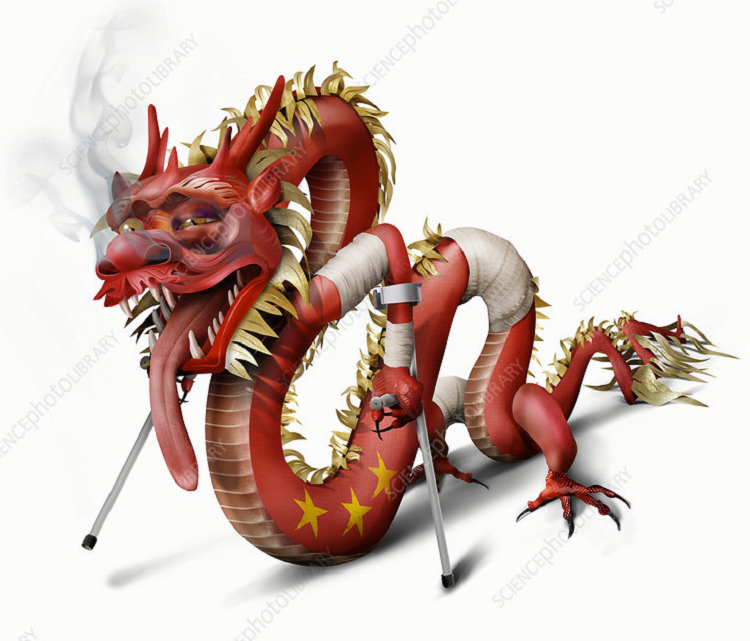CHINA’S ECONOMY HITS THE SKIDS
 The bad economic news from China keeps coming.
The bad economic news from China keeps coming.
Exports fell 12.4% in June. Between 2012 and 2022 China added at least $10 trillion more to its debt load than the U.S. Youth unemployment is at record levels, even as manufacturers report severe labor shortages. The residential property developers at the heart of China’s long boom look increasingly vulnerable, and local governments who have long relied on a red-hot real estate market for revenue are turning to Beijing with their hands out.
Some look at the troubling statistics and predict that China is headed for a catastrophic market bust. Such forecasts, for now, seem premature. The central government still has a lot of money to throw at its problems, and the increasingly totalitarian state that China is becoming has many policy tools at its disposal.
But while China’s economic outlook is as uncertain as its long boom is unprecedented, foreign-policy strategists should prepare for a world in which China’s era of superfast growth has come to an end.
Many factors have combined to make it harder for China to maintain the blistering growth of the last generation. Beijing’s current turn to more central control and Communist Party “leadership” undermines the private-sector dynamism that helped make the country’s economy so formidable.
China’s model of central control tends to work less efficiently as the economy becomes more complex. Its workforce is getting more demanding even as its population begins to decline. China’s trading partners have become more sensitive to Chinese rule-breaking as Chinese producers threaten to dominate more global markets.
A secular slowdown in China’s growth would be a mixed blessing for the U.S.
On one hand, many in the U.S. and abroad believe unrealistically that China will surpass the U.S. and outpace the rest of the world for decades. Such projections foster arrogance inside China and defeatism among those seeking to manage its rise.
Belief that China’s economic surge will continue indefinitely also increases the appeal of China’s model beyond its borders and encourages business and political leaders to see good relations with China as indispensable for long-term prosperity.
But slowing Chinese growth won’t end America’s China problem. Its economy is already large enough, and its military and technological capacities great enough, that China will remain a powerful and disruptive global force for the foreseeable future.
In the short term, a slowing Chinese economy could increase U.S.-China tension. Pointing to U.S. tariffs and controls over exports of sensitive technologies, Chinese leaders will deflect the economic blame onto Washington. That will increase xenophobic feeling inside China, creating political pressure for more assertive foreign-policy moves.
Longer term, the effects of decelerating Chinese growth would likely be, from a U.S. standpoint, more benign. Truculent finger-pointing might be China’s short-term response to economic stress, but in the longer run many in China would see better relations with the West as necessary for China’s economic health and political stability.
Long-term slowing growth would likely force China’s leaders to focus more on internal issues. With an aging population, a frustrated younger generation and wide gaps between rich areas like Shanghai and Shenzhen and poorer ones in the “Rust Belt” northeast and interior, Beijing will find it much harder to maintain political stability in a time of slow growth.
Increases in the Chinese defense budget could be more difficult to sustain politically, given pressure to spend scarce funds on domestic priorities as the population ages and important social needs go unmet.
A return to something like Deng Xiaoping’s policy of “peaceful rise” could appeal to a Chinese leadership facing limited economic options and a restless population.
With “peaceful rise,” Beijing avoided problems with neighbors and the U.S. to minimize foreign worries about China’s growing power. A willingness to discuss arms limits and confidence-building measures in the South China Sea could signal a future Chinese decision to turn to a less confrontational path.
Other consequences of a secular slowdown in China’s growth rate would ripple around the world.
The wealth gap between China and developing neighbors like India and Indonesia would likely narrow. Commodity producers in Latin America and Africa would face less demand for their products from a slowing China, even as Beijing reduces its commitments to controversial projects like its Belt and Road Initiative. Global emissions targets could be much easier to achieve if China’s growth slows.
Nobody knows how China’s economy will perform two, three or 10 years into the future. Beijing propagandists want to trumpet China’s inexorable, unstoppable rise. But China, like Japan, likely will experience slower growth as its economy matures, and American policy makers must be ready for the opportunities that the shift will create.
Walter Russell Mead is the Ravenel B. Curry III Distinguished Fellow in Strategy and Statesmanship at Hudson Institute, the Global View Columnist at The Wall Street Journal, and the James Clarke Chace Professor of Foreign Affairs and Humanities at Bard College in New York.

